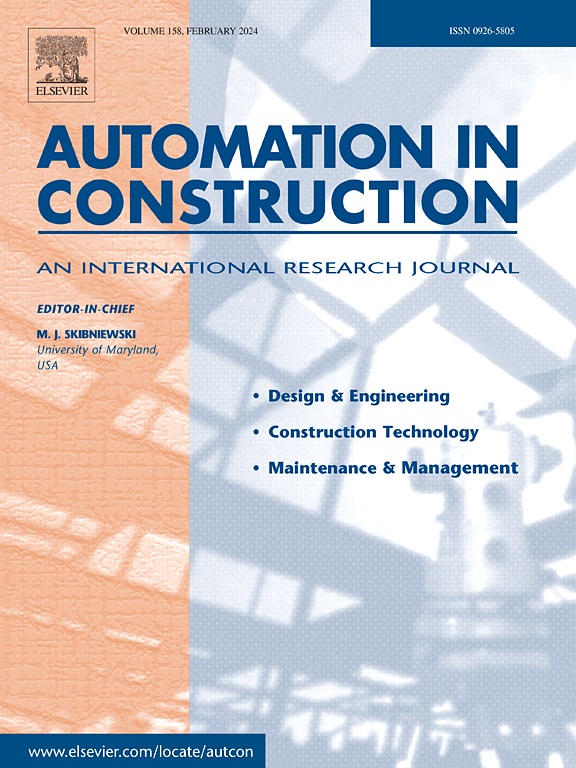Deep learning-based fatigue monitoring of construction workers using physiological signals
IF 9.6
1区 工程技术
Q1 CONSTRUCTION & BUILDING TECHNOLOGY
引用次数: 0
Abstract
Construction workers often suffer from physical fatigue, leading to health issues, quality compromises, and accidents. Previous research on fatigue monitoring using physiological measures has three main limitations: inappropriate benchmarking with the Ratings of Perceived Exertion (RPE) scale, which poorly correlates with actual field fatigue; data collection in controlled settings; and ignoring the time-series nature of physiological signals. These issues question the applicability of such measures for monitoring fatigue on active job sites. This paper introduces an approach leveraging deep learning models and physiological data, using appropriate benchmarks and comprehensive on-site data collection. The approach was evaluated using metrics such as accuracy, precision, recall, specificity, and the F1 Score. Results showed models like Bi-LSTM achieved up to 98.5 % accuracy, validating the effectiveness of physiological signals. This paper contributes to automation in construction by developing deep learning models for fatigue monitoring that can automate safety-related concerns for construction workers and managers.
基于深度学习的建筑工人生理信号疲劳监测
建筑工人经常遭受身体疲劳,导致健康问题,质量妥协和事故。以往的疲劳监测研究主要存在三个方面的局限性:使用感知疲劳等级(RPE)量表的基准设置不当,与实际的野外疲劳相关性较差;在受控环境中收集数据;并且忽略了生理信号的时序性。这些问题质疑这些措施是否适用于监测工作现场的疲劳情况。本文介绍了一种利用深度学习模型和生理数据的方法,使用适当的基准和全面的现场数据收集。采用准确性、精密度、召回率、特异性和F1评分等指标对该方法进行评估。结果表明,Bi-LSTM模型的准确率高达98.5%,验证了生理信号的有效性。本文通过开发用于疲劳监测的深度学习模型,为建筑工人和管理人员自动化安全相关问题,为建筑自动化做出了贡献。
本文章由计算机程序翻译,如有差异,请以英文原文为准。
求助全文
约1分钟内获得全文
求助全文
来源期刊

Automation in Construction
工程技术-工程:土木
CiteScore
19.20
自引率
16.50%
发文量
563
审稿时长
8.5 months
期刊介绍:
Automation in Construction is an international journal that focuses on publishing original research papers related to the use of Information Technologies in various aspects of the construction industry. The journal covers topics such as design, engineering, construction technologies, and the maintenance and management of constructed facilities.
The scope of Automation in Construction is extensive and covers all stages of the construction life cycle. This includes initial planning and design, construction of the facility, operation and maintenance, as well as the eventual dismantling and recycling of buildings and engineering structures.
 求助内容:
求助内容: 应助结果提醒方式:
应助结果提醒方式:


